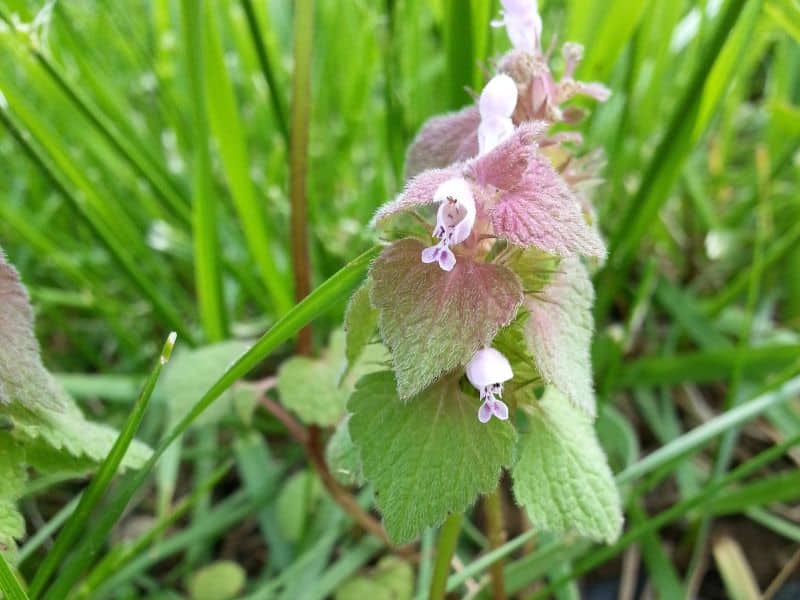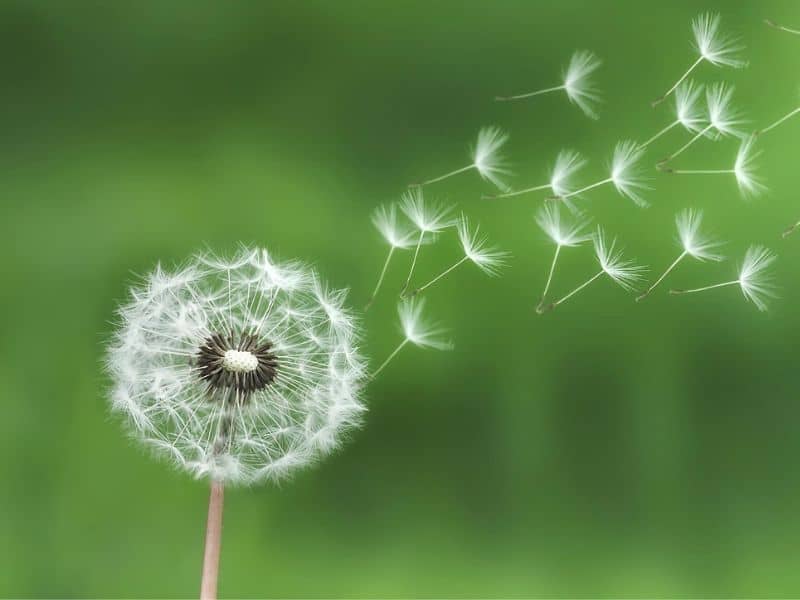Dandelions and Bees: A Good Match?
A pesky weed to some – yet dandelions and bees have an important relationship – especially early in the season. The tiny flowers provide needed food for honey bees and other insects. This at a time of year when food may be scarce. But, is this true? Are these two really the perfect couple that they seem to be? The real answer is more complicated than it may seem at first. Let’s look closer.

Considered a nuisance by many homeowners, the dandelion is not without its fans. A lawn in full bloom with thousands of tiny yellow flowers is a beautiful sight. But, it is one of those weeds that feed bees.
Do Bees Need Dandelion Flowers?
What about providing nourishment for hungry bees? Do dandelion flowers provide food that bees eat? Yes, they do.
In fact, they are one of many wildflowers that help bees by providing nectar and pollen. However, the true value of dandelions to bees is actually more complex.
If you were to destroy every dandelion plant in sight – the bees are not going to die. But, that does not mean that they are not of some benefit.
Why are Dandelions Important to Bees?
Dandelions have earned their place in the hearts of beekeepers due to their early bloom time. In fact, in many areas of the country – you may find an occasional yellow flower at any month of the year.
They not only survive but actually flower in places protected from the coldest temperatures and snow. Urban beekeepers have been known to find a few plants in bloom beside buildings – even in cold regions.
When over-wintered colonies first start to forage in late Winter/early Spring, they are actively seeking fresh food sources. Nectar is always on the menu plan but fresh pollen is in much demand.
Though the air temperature may be too cold for most bees to fly, they will enjoy the flowers on warmer days.

Best Early Pollen Sources- Weeds, Shrubs and Trees
They may be early bloomers, but dandelions are not the first food source for most bees.
Instead, some weeds (like Purple Deadnettle, Chickweed) and others beat the dandelions to the punch.
And, many early blooming trees feed bees with better quality and more quantity of food. Due to the size of the plant, tree pollen can be a big boost to a colony in need.
Dandelion Pollen is Not Ideal
Seeing honey bees collecting dandelion pollen is a common sight. They pack the bright orange pollen grains on their hind legs.
When those pollen baskets (special honey bee body parts)are full, back to the hive they go with their bounty. Bees use pollen as a protein source to raise thousands of new workers.
However, dandelions do not give bees everything they need. Dandelion pollen is lacking in some of the essential amino acids that honey bees need. Notably these are isoleucine, valine, leucine and arginine.
Does this mean dandelions are bad for our bees? Of course not, it simply means that the colony needs a variety of food sources – rather than relying only on dandelions.
Honestly, the dandelion flower and plant parts may be more beneficial for humans than bees. They contain antioxidants, minerals and vitamins and have been used in herbal medicine for years. In Spring, I like to make dandelion salve – it’s great for minor cuts.

Benefits of the Bloom
Ok, dandelions are not the ideal food for our winged friends. They may not be considered a super food that is going to solve all of the nutritional needs of a colony. However, this does not mean that dandelion flowers are not beneficial to insects.
- low growing good forage on windy days
- dandelions fill in food gaps
Low Growing
In my region, we often have very cool days and wind when many of the early flowering trees are blooming.
Our area is known for a big early maple bloom. Red Maple trees are a good food source for honey bees.
But some days are just too windy to fly. All of the nectar and pollen in the world is useless if the foragers can not make it to the bloom.
On those days, dandelions and bees are perfect partners on these windy days. These plants grow low on the ground and the flowers are easy to access.
Fills Food Gaps
They can also provide colonies with a food source that fills gap times. Perhaps one pollen source has stopped blooming and the next good source has not started yet.
Dandelion flowers give the workers something meaningful to do. Not every plant produces pollen and nectar at the same time of day. Dandelions provide more food during the late morning.
Foraging bees may move on to another type of plant in the afternoon. I have seen the same behavior when I plant a patch of buckwheat for my colonies.

FAQs
In some regions, dandelions are an important early food source for bees – providing pollen for protein and nectar as a sugar source.
These plants are apomictic. They reproduce asexually and do not need any type of pollinator. No wonder they produce so rapidly in your lawn – even though you may not want them there.
In most cases, removing dandelions will not hurt area bees. However, avoid using weed killing chemicals that will harm bees and other pollinators.
At least at times, dandelions are beneficial to honey bees, native bees, butterflies and other pollinators. They many not provide a complete nutritional profile but that does not mean they have no merit.
I would not advise purposely planting a field of dandelions. There are many other plants that would provide more nutrition.
However, that does not mean that some hungry bees won’t be thrilled to find some of those tiny yellow flowers in your yard. Leave them a few weeks. Don’t be in a big hurry to mow them down.
A Final Word
Are dandelions a super food for honey bees? No – they do not provide complete nutrition. And in some regions, they may not be the first food source of Spring. Yet, while dandelions may not be the perfect bee food, a field of these little yellow flowers is better for bees than a field of non-blooming grass.

